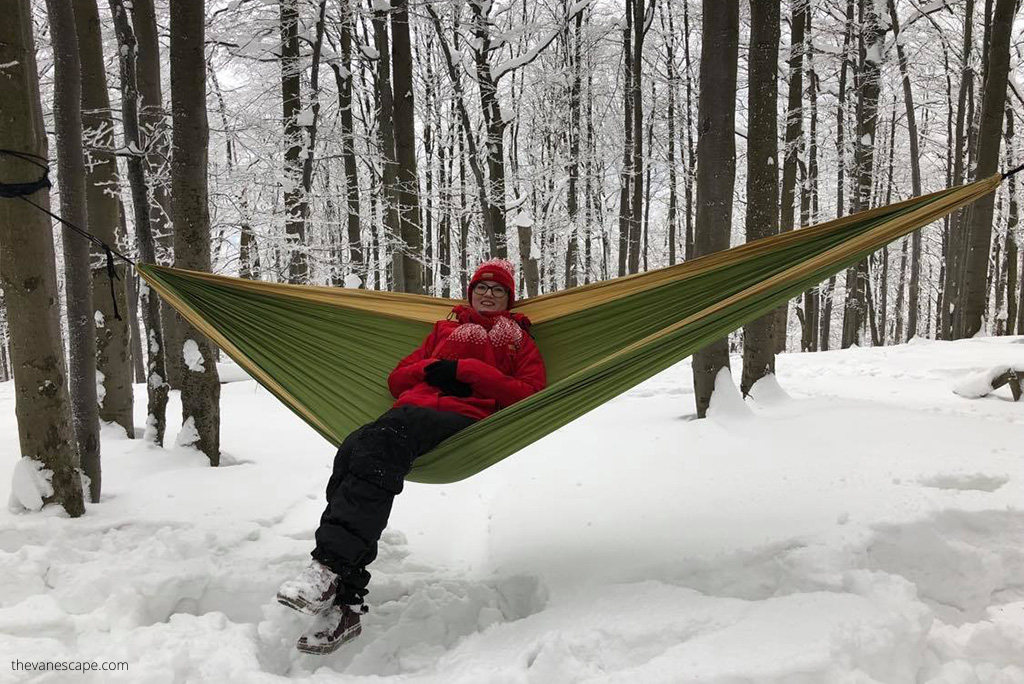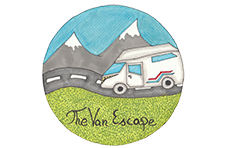How to Choose the Best Backpacking Hammock?
How to Choose the Best Backpacking Hammock? You will find the answer in this article, as we are hammock lovers. Gently swinging in a hammock brings us peace. Regardless of where we travel and how we travel, the hammock is always in our backpack or luggage, and we use it a lot. A camping hammock gives us a lot of fun. Whether you are looking for a lightweight setup for backpacking or something comfy for car camping, our tips will be handy. How to choose the best backpacking hammock to have an unforgettable adventure? We share our hammock experience and the best models of hammocks we use.
This article may contain affiliate / compensated links. For full information, please see our disclaimer here.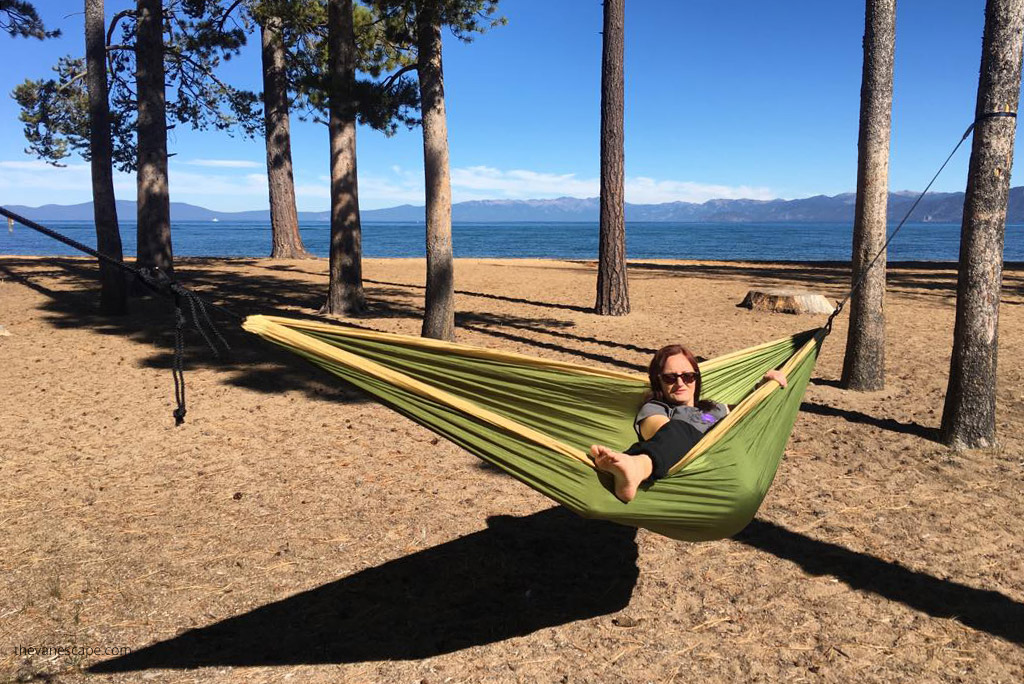
Backpacking hammocks are becoming more and more popular. They are often taken on trips instead of tents, especially in wooded areas, where it is easy to hang a hammock, and when the weather conditions are favorable for this camping style. What are the pros and cons of backpacking hammocks? How to choose the best backpacking hammock? What to look for when choosing a camping hammock? We share our insights.
We use the hammock on every trip. What’s more, we pack a light hammock for mountain hiking and for almost each hiking trail if we know there are woods. We also use it during our car camping trips. We hang it up and relax, admiring the views. It accompanies us on every road trip. The gentle rocking in the hammock is so relaxing.
How to Choose the Best Backpacking Hammock?
A huge selection of camping hammocks is available, and they come in single and double sizes. To find the perfect backpacking hammock, you must consider your needs and the overall size, features, pricing, material, suspension systems, hammock construction, and weather conditions. Below are our tips.
Hammock Construction
The structures of the hammocks differ slightly from each other. It all depends on how often you plan to use the hammock and for what purpose. Is it only for recreational purposes and a few hours of naps? Or are you planning a weekly backpacking hike and sleeping in a hammock for several nights? It would be best if you felt comfortable in your camping hammock.
Gathered-end Hammocks tend to cause “banana” shaped sleeping positions. For us, this banana shape is not a problem. We feel like a newborn after resting in this hammock. Moreover, some gathered-end models are made to lay asymmetrically, which helps flatten the hang lay. So it will be comfier.
Another type of backpacking hammock is the Bridge-end Hammock, which tries to solve the problem of the banana-shaped lay for those who don’t like sleeping in this position. Bridge hammocks attempt to flatten out the entire hammock. There are two spreader bars at the foot and head. But spreader bars are larger and might be heavier in some models.
So, we don’t recommend this solution for strenuous backpacking adventures. Such attachments are often used in typical relaxation hammocks. They are certainly extremely comfortable and, above all, very photogenic. Therefore, such a hammock is also a great solution if you plan a car road trip; you do not have to carry a hammock in your backpack, and you want beautiful Instagram photos.
Hammock Material & Fabrics
Most of all, hammocks for backpacking should be lightweight. That’s why you should choose the best lightweight materials, nylon and polyester. They are durable and abrasion-resistant.
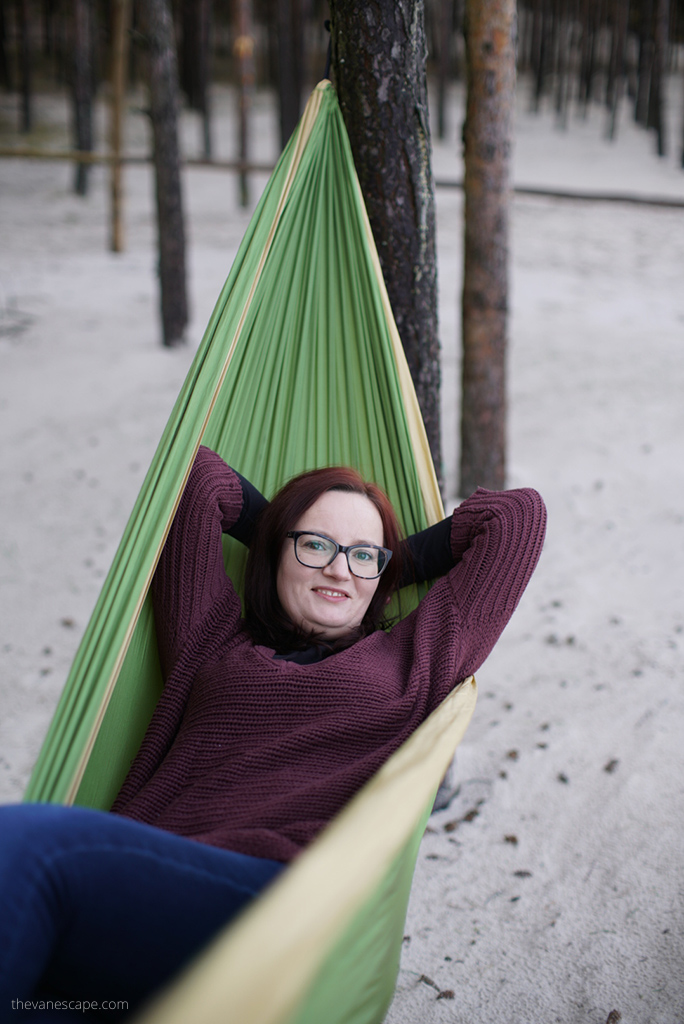
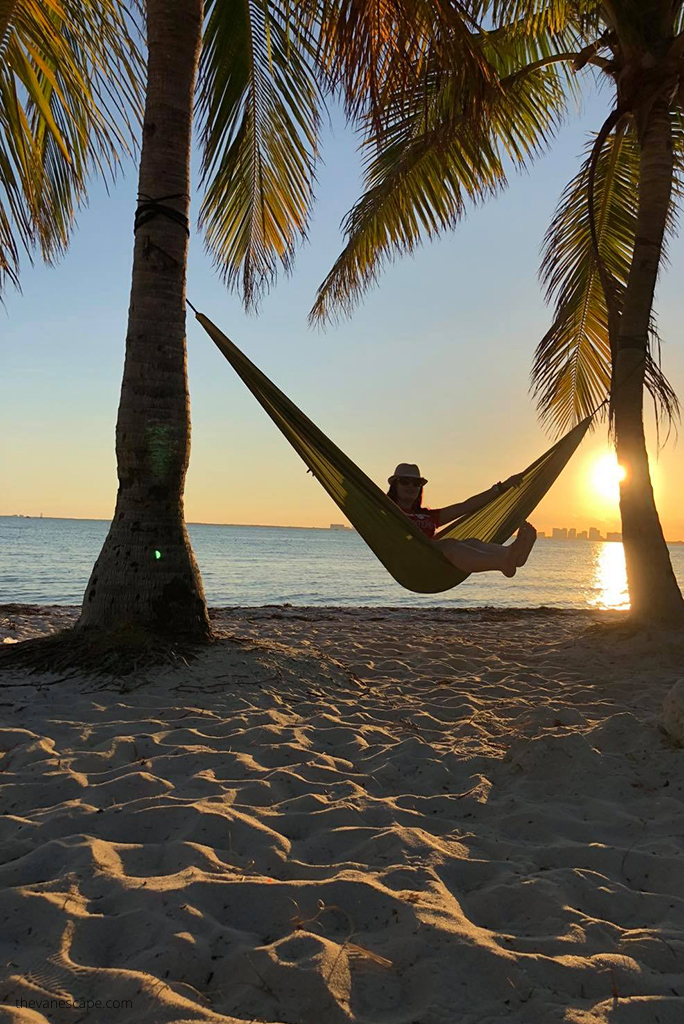
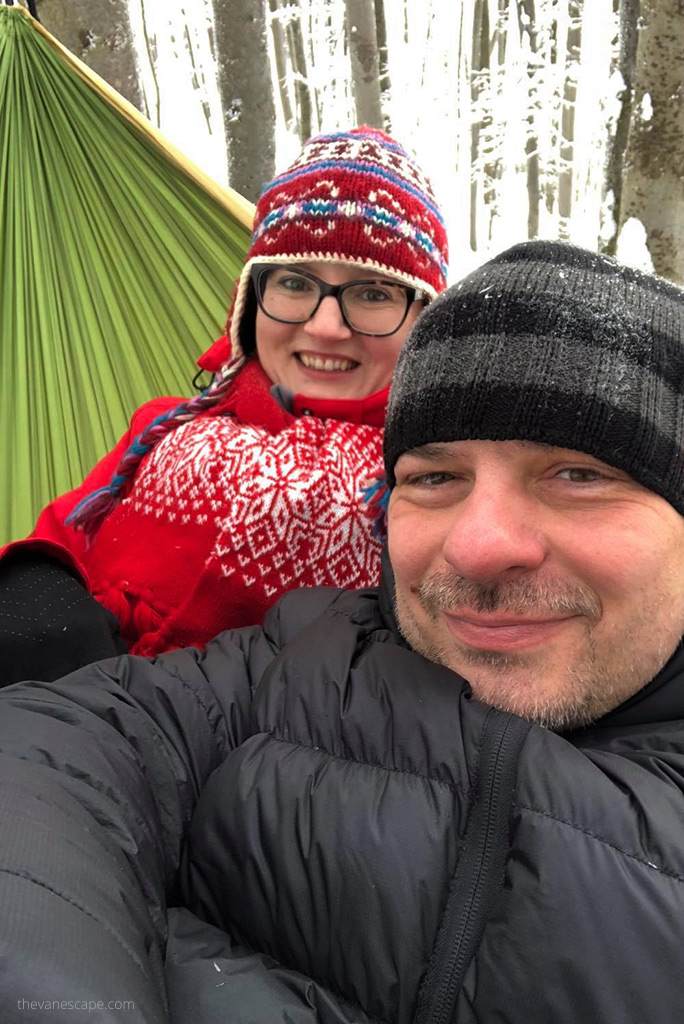
Hammock Suspension Systems
How to easily and safely hang a hammock is crucial to your comfy. The hammock must withstand your weight of you and any other items you want to put in it. That’s why suspension systems are important. It might be tricky to hang hammocks properly at the beginning of the adventure with camping hammocks.
Any hammock has a rope, webbing, or cord that holds the user’s weight. Suspension straps, also called tree straps, are the most popular. We like this system most, as it’s easy to use.
Choose a backpacking hammock with tree straps, as they don’t damage a tree. Don’t hang a hammock to the tree if you have only ropes. Tree straps are saved the tree, but they also save your hammock suspension. The tree’s bark can fray the ropes; over time, they may not support your weight. Thanks to the straps, you will avoid such surprises. Moreover, hanging a hammock without straps to the tree is not allowed in many areas of public land.
Hammock Bug Nets
Depending on the conditions you travel in, and the year’s seasons, you may also need protection from insects. At the beginning of our hammock adventure, we did not use a hammock bug net, as we were camping in an area with no bugs at night.
But when we camped in Havasu Falls, we regretted not packing bug net. Even though we had a double hammock, we slept in the tent because the mosquitoes in the evening were too tiring to stay in a hammock without bug net protection.
Besides, not only mosquitoes can weary you. There are also ants, wasps, tiresome flies, and hundreds of other insects. Curious squirrels can jump off the tree. Some branches broken by the wind may fall on you. Therefore, it is worth getting a light bug net to have a peaceful and safe rest.
Bug nets can be integrated with hammocks or separated. It depends on your needs, what you like. We have a separate bug net, as we often use a hammock just for relaxing, not for sleeping in it. Our net surrounds the hammock and is easy to remove when not needed.
Rain Tarps for Backpacking Hammock
Again, whether you need rain protection depends on where you will camp and the season you plan your trip. Shelter from the rain is important for your comfy and health as well. You don’t want to wake up wet because you risk catching a cold. So, buy hammock rain tarps.
Some camping hammocks include integrated rain tarps. Buy them as a set. However, integrated rain protection, when attached to the suspension, may sometimes lose tension when you lay in the hammock, which ends up allowing water in. That is why we prefer a separate lightweight rainfly with its suspension cord.
How to Choose the Best Backpacking Hammock for Cold Weather?
We are always honest with you. We did not sleep in the camping hammock in winter or in very cold weather. Yes, we took our double hammock also on our winter trips to rock above the snow. But we were dressed warmly or wrapped in blankets during our winter rest in a camping hammock.
However, you must choose a professionally insulated hammock if you decide to camp in a hammock in cold weather. Otherwise, you can get very sick.
A winter camping hammock is not cheap, but it is not worth saving on the most important solution because heat loss during a frosty night can endanger your life. Hammocks with adequate winter insulation are also heavier and take up more space.
It is tough to keep warm in winter in a hammock. It quickly loses its temperature. You will not use an ordinary sleeping bag for sleeping in a hammock because, due to the body’s position in the hammock, the insulation will not be as good as in standard conditions.
So, the best solution is An Underquilt and Top Quilt—insulation for camping hammocks in cold weather. If you spend the night in the cold, consider the highest-quality UnderQuilt Hammock Insulation. To have the best insulation system, it would be best if you matched the Hammock Underquilt with the Hammock Top Quilt. The insulation should be compatible with your camping hammock.
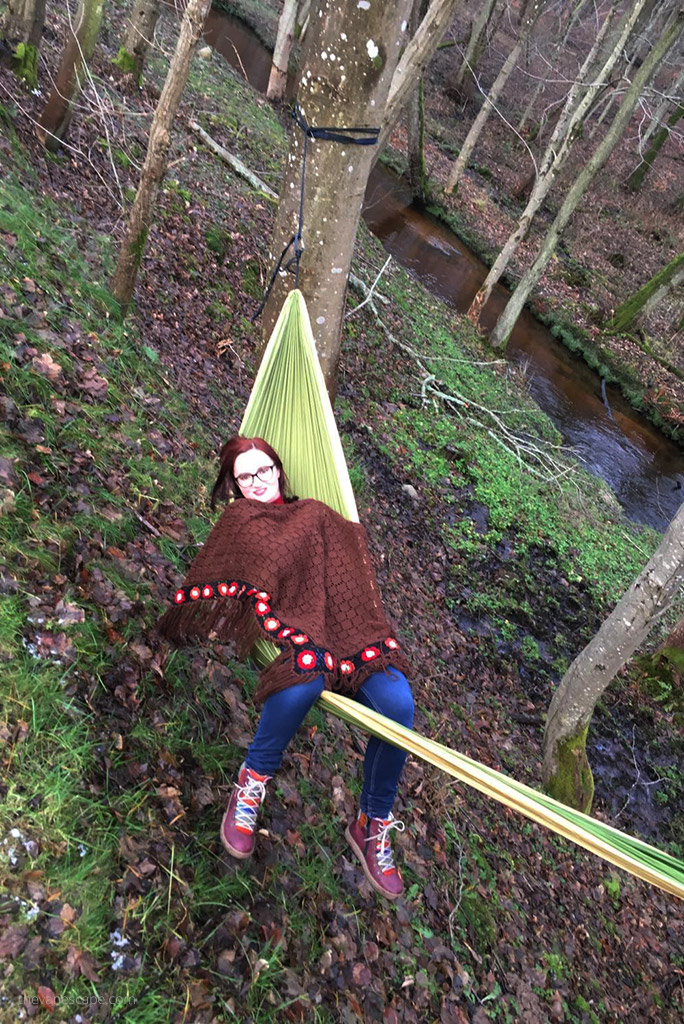
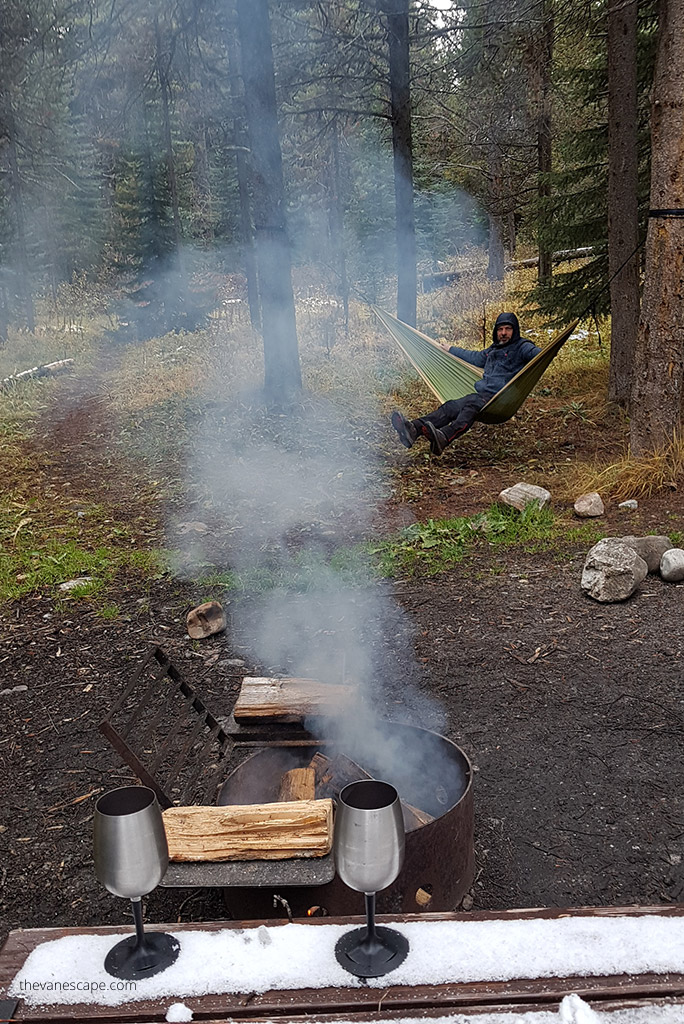
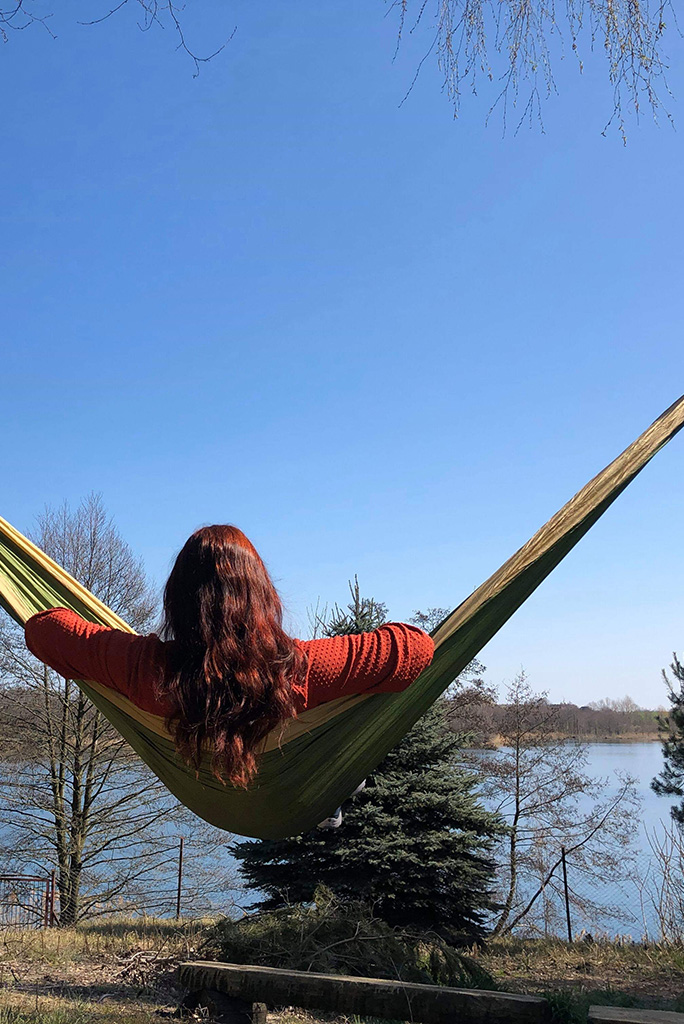
The Best Hammocks for Backpacking – Our Top Models
The choice of backpacking hammocks is huge. Therefore, it all depends on your needs and budget.
Our favorite model with whom we traveled America from Alaska to Florida on our 8-month road trip is Wise Owl Outfitters Camping Hammocks. It is extremely durable and comfy. It’s also lightweight and packable so that we can take it for hiking trails. We added Bug Net and Rain Tarp to it as well.
But if you plan to spend a lot of time backpacking and sleeping in a camping hammock, consider a 3-in-1 set that takes up as little space and is as light as possible.
The backpacking hammock might be perfect if you prepare well and choose the proper gear. We wish you an amazing backpacking hammock night under the stars.
